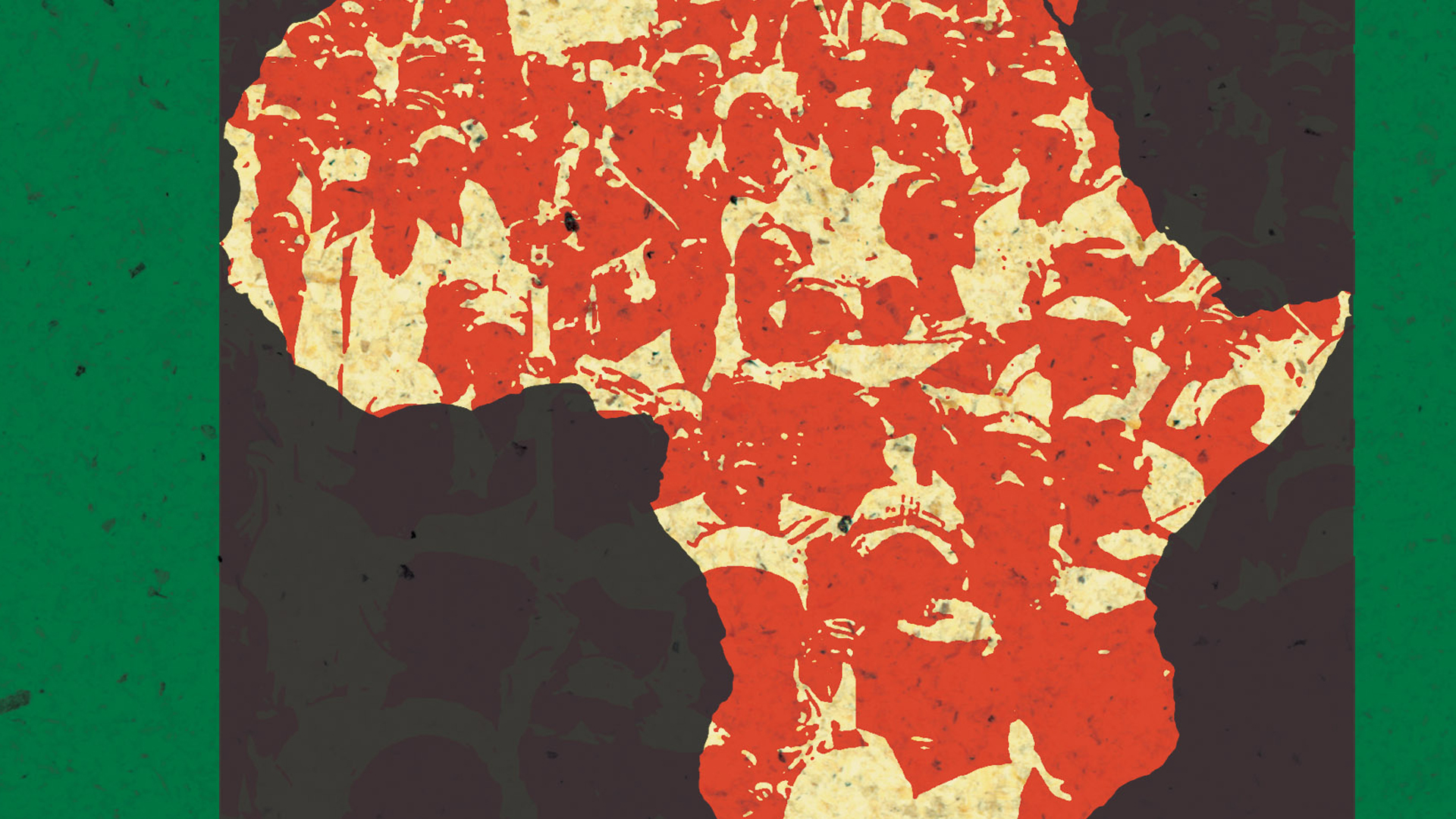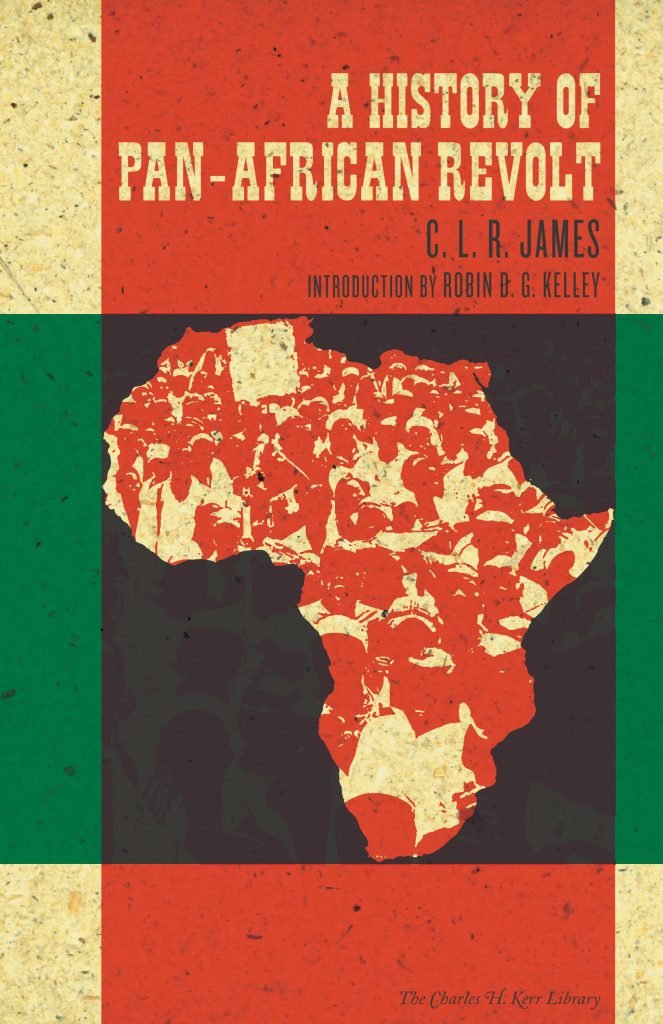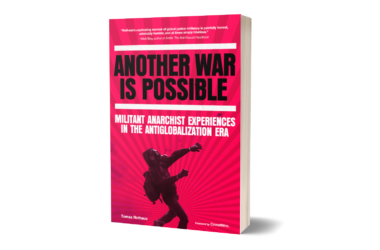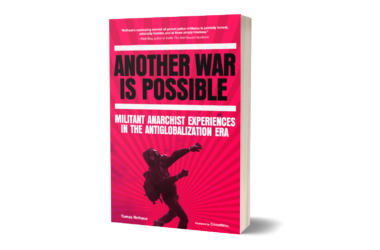New Frame
October 23rd, 2018
In 1938 C.L.R. James, the great Trinidadian Marxist, published two books. The Black Jacobins: Toussaint L’Ouverture and the San Domingo Revolution was an account of Haitian Revolution that is now widely recognised as a classic. A History of Negro Revolt, republished as A History of Pan-African Revolt in 1969, was a much smaller volume looking at Black struggles for freedom in Africa, the Caribbean and the United States from 1739 to early 1938. As Robin D.G. Kelley observed in his introduction to the new edition of the book, first published in 2012, it “has remained one of the best kept secrets among a handful of Marxists and black militants. It never sold many copies, but everyone familiar with James’s ideas or the resurgence of Pan-Africanism in the 1960s knew of its influence. The late Walter Rodney, the great historian and Guyanese revolutionary, once called it ‘a mine of ideas advancing far ahead of its time’.”
James’s
survey of Black struggles includes a number of references to struggles
in South Africa, including the Industrial and Commercial Workers’ Union
(ICU). New Frame is delighted to be able to publish James’ account
of the ICU with permission from PM Press.
-New Frame
South African industry has brought the natives together in factories, mines and on the docks, and the circumstances of their employment tended to drive them toward industrial organisation in the modern manner. There is also the influence of the Russian Revolution.
The South African Communist Party was founded only in 1924, but it had its origin in a previous organisation that was already in existence in 1920. It directed its propaganda chiefly to the natives. But whereas in Sierra Leone and Gambia, the black intelligentsia of the left for the moment are more vocal than effective, the South African system allows very few of these to exist, and drives even the few that are there into militant opposition. From these post-war conditions and the economic and political crisis of 1919 sprang the Industrial and Commercial Workers’ Union (ICU) of South Africa.
It was formed in 1919 by a Nyasaland (now Malawi) native, Clements Kadalie, and the organisation began with only 24 members. Without any help in finance, experience or encouragement, suffering persecution and arrest, they built a movement that matured in strikes, demonstrations and battles with the police, while white South Africa watched its incredible growth with alarm. Kadalie, as a native of Nyasaland could easily have been deported, but somehow he escaped this fate and drove his movement forward.
Port Elizabeth 1920
The first sign of the ICU’s real strength was the Port Elizabeth strike of 1920. The Port Elizabeth workers, mainly unskilled labourers, had demanded and obtained an increase of sixpence a day. In February 1920, a branch of the ICU was formed in Port Elizabeth. This demanded a further increase of sixpence a day, and as a consequence of fresh agitation, the workers obtained it. But this did not satisfy them and, on the advice of Kadalie, the president of the ICU, they advanced a demand for a minimum daily wage of ten shillings for unskilled male workers and seven shillings and sixpence for adult females.
Meetings were held all over the district by the ICU, at which workers were called upon to insist on this demand even to the point of a strike. This ICU agitation had a tremendous effect. Feeling was running high and the influence of Kadalie was increasing. At one meeting, the feelings of the workers were so aroused that some made a physical attack on Walter Rubusana, president of the South African Native Convention, who was known to be opposed to Kadalie. Rubusana was rescued by Kadalie, who, on seeing his danger, immediately intervened.
The police,
meanwhile, were looking for an excuse to arrest Kadalie. This attack on
Rubusana was used as a pretext. Rubusana made an affidavit concerning
the attack on him, and Kadalie was arrested on 23 October 1920, without a
warrant. When news of the arrest became known, the workers congregated
in the nearest square. A meeting was held and a deputation was sent to
the police to ask for the release of Kadalie on bail. The chief of
police refused. When the deputation returned with this news, the meeting
resolved to send an ultimatum to the police: unless Kadalie was
released by 5pm, they would release him themselves. The South African
native was openly challenging not only white employers, but the actual
forces of the state.
The whole police force was armed. The railway
police were called out. In addition, European volunteers were armed and
stationed in front of the police station where Kadalie was detained. By
5pm, the demonstration numbered 3 000 people. The mounted police were
ordered to charge, but they were unhorsed. An attempt was made to
disperse the crowd by means of a water hose. But the masses replied with
stones and other missiles. At this stage, two shots were fired and the
crowd began to retreat. While the crowd was running, the police opened
fire.
The official commission of inquiry stated: “It is established
beyond doubt that immediately after the first shots were fired, the
crowd stampeded in all directions, and that a rapid and sustained
fusillade was directed on the retreating crowd from the police station
for 60 seconds, as alleged by some witnesses, or two minutes as alleged
by others. One civilian admitted firing 15 shots; another as many as 13
shots, with the most fatal results: one European and 23 natives or
coloured males were killed or died of wounds. Native and coloured males
wounded, 45; females, one. European females wounded, four. Total
casualties, 76. Only two of these were shot immediately in front of the
steps, the others fell in different parts of the street away from the
police station, as far as Castle Street, 100 yards distant.”
Obviously the police were seizing the opportunity to smash the workers’ organisation once and for all. The net result, as so often, was to increase its strength. So powerful a force did the ICU become among black and coloured people that Barry Hertzog, a future prime minister of South Africa, thought it profitable to seek the support of the ICU in the Cape province. He sent a very cordial letter to Kadalie, enclosing a donation to the ICU, saying he was sorry he could not do more.
A membership of 100 000
Of course, immediately after Hertzog gained power, he persecuted the ICU even more fiercely. But the movement continued to grow, and in 1926 it reached its peak. In that year, it had a membership of 100 000. Teachers were leaving the profession to become agents of the ICU. In remote villages of South Africa, one could find a representative. Many who had not joined rallied to it in times of difficulty.
It will be difficult to overestimate what Kadalie and his partner, Allison Champion, achieved between 1919 and 1926. Kadalie was an orator, tall, with a splendid voice, and at his meetings he used to arouse workers to great heights of enthusiasm. At the conclusion of his speeches, his hearers were usually silent for some seconds before they were able to begin the applause. Champion was the very opposite of Kadalie in everything. More backward in outlook than Kadalie, who was aware of the working-class movement as an international force, he saw very little beyond Zululand, or Natal, and he was more organiser than orator.
The real parallel to this movement is the mass uprising in San Domingo. There is the same instinctive capacity for organisation, the same throwing-up of gifted leaders from among the masses. But whereas there was a French Revolution in 1794 rooting out the old order in France, needing the black revolution, and sending out encouragement, organisers and arms, there was nothing like that in Britain. Seen in that historical perspective, the Kadalie movement can be understood for the profoundly important thing it was.
After 1926, the movement began to decline. It could not maintain itself for long at that pitch without great and concrete successes. It was bound to stabilise itself at a less intense level. Kadalie lacked the education and the knowledge to organise it on a stable basis – the hardest of all tasks for a man of his origin. There was misappropriation of the funds. He saw the necessity for international affiliation. But though the constitution of the organisation condemned capitalism, he would not affiliate to the communist Third International. The white South African workers refused his offer of unity, for these, petit-bourgeois in outlook owing to their high wages and the social degradation of black people, are among the bitterest enemies of the native workers.
Kadalie went to Europe, affiliated the ICU to the International Federation of Trade Unions and sought the help of left-wing labour members. He took back a white man, William Ballinger, to assist him. But the decline of the ICU continued. The organisation split. The two sections became but a shadow of the early ICU, and Kadalie kept a cafe in Port Elizabeth, where the workers were shot down while demonstrating for his release.





